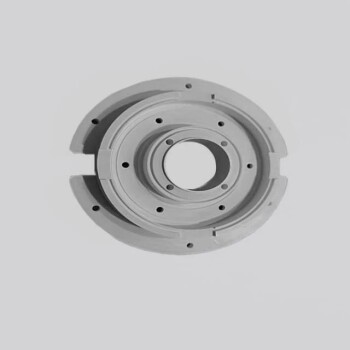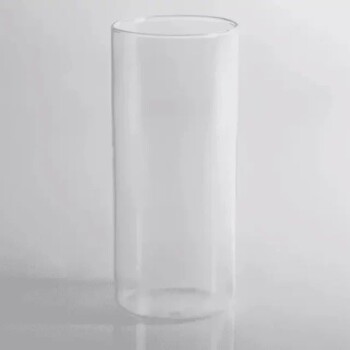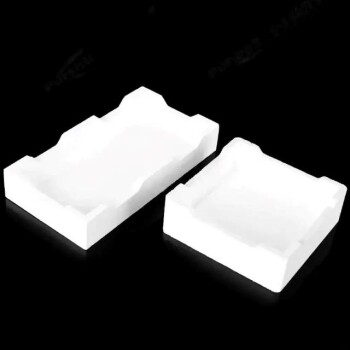
Glass material
High Temperature Resistant High Borosilicate Glass Stirring Rod Flow Diversion Laboratory Glass Rod
Item Number : KTG-2
Price varies based on specs and customizations
- Material
- high borosilicate glass

Shipping:
Contact us to get shipping details Enjoy On-time Dispatch Guarantee.
Introduction
High borosilicate glass stirring rods, also known as flow guide laboratory glass rods, are essential tools in laboratory settings known for their high temperature resistance and durability. It is used to accelerate stirring, accelerate the dissolution of solutes, promote mutual dissolution, drain during filtration, dip liquid, stir in an evaporating dish to prevent splashing caused by uneven heating, and can also be used to evaporate and crystallize a small amount of solution, etc.
Detail & Parts



Technical specifications
| Specifications | Diameter | Length | Packaging quantity |
|---|---|---|---|
| Diameter 4mm Length 150mm | 4mm | 150mm | 10 pcs/pack |
| Diameter 4mm Length 200mm | 4mm | 200mm | 10 pcs/pack |
| Diameter 4mm Length 250mm | 4mm | 250mm | 10 pcs/pack |
| Diameter 5mm Length 150mm | 5mm | 150mm | 10 pcs/pack |
| Diameter 5mm Length 200mm | 5mm | 200mm | 10 pcs/pack |
| Diameter 5mm Length 250mm | 5mm | 250mm | 10 pcs/pack |
| Diameter 5mm Length 300mm | 5mm | 300mm | 10 pcs/pack |
| Diameter 6mm Length 150mm | 6mm | 150mm | 10 pcs/pack |
| Diameter 6mm Length 200mm | 6mm | 200mm | 10 pcs/pack |
| Diameter 6mm Length 250mm | 6mm | 250mm | 10 pcs/pack |
| Diameter 6mm Length 300mm | 6mm | 300mm | 10 pcs/pack |
| Diameter 7mm Length 150mm | 7mm | 150mm | 10 pcs/pack |
| Diameter 7mm Length 200mm | 7mm | 200mm | 10 pcs/pack |
| Diameter 7mm Length 300mm | 7mm | 300mm | 10 pcs/pack |
| Diameter 8mm Length 150mm | 8mm | 150mm | 10 pcs/pack |
| Diameter 8mm Length 200mm | 8mm | 200mm | 10 pcs/pack |
| Diameter 8mm Length 300mm | 8mm | 300mm | 10 pcs/pack |
| Diameter 10mm Length 150mm | 10mm | 150mm | 10 pcs/pack |
| Diameter 10mm Length 200mm | 10mm | 200mm | 10 pcs/pack |
| Diameter 10mm Length 300mm | 10mm | 300mm | 10 pcs/pack |
| Diameter 10mm Length 400mm | 10mm | 400mm | 10 pcs/pack |
Note: Manual measurement data has a certain error, please refer to the actual object, the error range is within 1mm
Features
Borosilicate glass stirring rods are crafted from high-quality borosilicate glass, renowned for its exceptional thermal and chemical resistance. These rods are ideal for a variety of laboratory applications, offering durability and reliability in experimental settings. Here are the key benefits of using borosilicate glass stirring rods:
- Thermal Resistance: Borosilicate glass has a very low coefficient of thermal expansion, making it highly resistant to thermal shock. This allows the stirring rods to withstand temperature differentials without fracturing, ensuring consistent performance even in high-temperature experiments.
- Chemical Resistance: The material's high chemical resistance ensures that the stirring rods do not react with most chemicals, making them suitable for use with a wide range of reagents. This property minimizes the risk of contamination and ensures accurate experimental results.
- Visibility: The clear nature of borosilicate glass provides excellent visibility, allowing researchers to monitor reactions and mixing processes closely. This is particularly beneficial in precise laboratory settings where visual confirmation of processes is crucial.
- Durability: Borosilicate glass is known for its durability and longevity. The stirring rods are resistant to scratching and chipping, maintaining their integrity over extended periods of use.
- Versatility: These stirring rods are versatile and can be used in various applications across the chemical, biotech, and pharmaceutical industries. Their adaptability makes them a valuable tool in both research and development, as well as in kilo plant production.
- Easy to Clean: The smooth surface of borosilicate glass is easy to clean and resistant to staining, ensuring that the stirring rods remain hygienic and ready for use in subsequent experiments.
Designed for You
KinTek provide deep custom made service and equipment to worldwide customers, our specialized teamwork and rich experienced engineers are capable to undertake the custom tailoring hardware and software equipment requirements, and help our customer to build up the exclusive and personalized equipment and solution!
Would you please drop your ideas to us, our engineers are ready for you now!
FAQ
What Is A Thermal Element?
How Does A Thermal Element Work?
What Are The Advantages Of Using Thermal Elements?
What Are The Different Types Of Thermal Elements?
How Should Thermal Elements Be Calibrated And Maintained?
4.7
out of
5
Excellent thermal resistance, perfect for high-temp experiments!
4.8
out of
5
Superb chemical resistance, no contamination worries.
4.9
out of
5
Durable and long-lasting, worth every penny.
4.7
out of
5
Clear visibility, easy to monitor reactions.
4.8
out of
5
Versatile and adaptable, great for various lab needs.
4.9
out of
5
Easy to clean, maintains hygiene well.
4.7
out of
5
Resistant to thermal shock, reliable performance.
4.8
out of
5
High-quality material, no chipping or scratching.
4.9
out of
5
Ideal for precise mixing, enhances experiment accuracy.
4.7
out of
5
Fast delivery, arrived in perfect condition.
4.8
out of
5
Value for money, highly efficient stirring rod.
4.9
out of
5
Technologically advanced, meets all lab standards.
4.7
out of
5
Sturdy construction, handles high temperatures well.
4.8
out of
5
Chemically inert, perfect for sensitive reactions.
4.9
out of
5
Excellent customer service, prompt responses.
4.7
out of
5
Smooth operation, minimal maintenance required.
4.8
out of
5
Highly recommended for any lab setting.
4.9
out of
5
Outstanding durability, consistent performance.
REQUEST A QUOTE
Our professional team will reply to you within one business day. Please feel free to contact us!
Related Products

Custom Boron Nitride (BN) Ceramic Parts
Boron nitride (BN) ceramics can have different shapes, so they can be manufactured to generate high temperature, high pressure, insulation and heat dissipation to avoid neutron radiation.

Advanced Engineering Fine Ceramics Boron Nitride (BN) Ceramic Parts
Boron nitride ((BN) is a compound with high melting point, high hardness, high thermal conductivity and high electrical resistivity. Its crystal structure is similar to graphene and harder than diamond.

Hexagonal Boron Nitride HBN Ceramic Ring
Boron nitride ceramic (BN) rings are commonly used in high temperature applications such as furnace fixtures, heat exchangers and semiconductor processing.

Alkali-Free Boro-Aluminosilicate Glass
Boroaluminosilicate glass is highly resistant to thermal expansion, making it suitable for applications that require resistance to temperature changes, such as laboratory glassware and cooking utensils.

Zirconia Ceramic Gasket Insulating Engineering Advanced Fine Ceramics
Zirconia insulating ceramic gasket has high melting point, high resistivity, low thermal expansion coefficient and other properties, making it an important high temperature resistant material, ceramic insulating material and ceramic sunscreen material.

In the journey of scientific exploration and industrial production, every detail is crucial. Our arc-shaped alumina ceramic crucibles, with their excellent high temperature resistance and stable chemical properties, have become a powerful assistant in laboratories and industrial fields. They are made of high-purity alumina materials and manufactured through precision processes to ensure excellent performance in extreme environments.

High Temperature Resistant Optical Quartz Glass Sheet
Discover the power of optical glass sheets for precise light manipulation in telecommunications, astronomy, and beyond. Unlock advancements in optical technology with exceptional clarity and tailored refractive properties.

Alumina ceramic screws are fastening components made of 99.5% alumina, ideal for extreme applications requiring excellent thermal resistance, electrical insulation and chemical resistance.

High Temperature Wear-Resistant Alumina Al2O3 Plate for Engineering Advanced Fine Ceramics
High temperature wear-resistant insulating alumina plate has excellent insulation performance and high temperature resistance.

Advanced Engineering Fine Ceramics Alumina Ceramic Saggar for Fine Corundum
Alumina sagger products have the characteristics of high temperature resistance, good thermal shock stability, small expansion coefficient, anti-stripping, and good anti-powdering performance.

Efficient and reliable, KinTek KHB Heating Circulator is perfect for your lab needs. With a max. heating temperature of up to 300℃, it features accurate temperature control and fast heating.

Electron Beam Evaporation Coating Conductive Boron Nitride Crucible BN Crucible
High-purity and smooth conductive boron nitride crucible for electron beam evaporation coating, with high temperature and thermal cycling performance.

High Temperature Alumina (Al2O3) Furnace Tube for Engineering Advanced Fine Ceramics
High temperature alumina furnace tube combines the advantages of high hardness of alumina, good chemical inertness and steel, and has excellent wear resistance, thermal shock resistance and mechanical shock resistance.

High Temperature Aluminum Oxide (Al2O3) Protective Tube for Engineering Advanced Fine Ceramics
Alumina oxide protective tube, also known as high temperature resistant corundum tube or thermocouple protection tube, is a ceramic tube mainly made of alumina (aluminum oxide).

High Temperature Muffle Oven Furnace for Laboratory Debinding and Pre Sintering
KT-MD High temperature debinding and pre-sintering furnace for ceramic materials with various molding processes. Ideal for electronic components such as MLCC and NFC.

1700℃ Laboratory Quartz Tube Furnace with Alumina Tube Tubular Furnace
Looking for a high-temperature tube furnace? Check out our 1700℃ Tube Furnace with Alumina Tube. Perfect for research and industrial applications up to 1700C.

Horizontal High Temperature Graphite Vacuum Graphitization Furnace
Horizontal Graphitization Furnace: This type of furnace is designed with the heating elements placed horizontally, allowing for uniform heating of the sample. It's well-suited for graphitizing large or bulky samples that require precise temperature control and uniformity.

Graphite Vacuum Furnace Bottom Discharge Graphitization Furnace for Carbon Materials
Bottom-out graphitization furnace for carbon materials, ultra-high temperature furnace up to 3100°C, suitable for graphitization and sintering of carbon rods and carbon blocks. Vertical design, bottom discharging, convenient feeding and discharging, high temperature uniformity, low energy consumption, good stability, hydraulic lifting system, convenient loading and unloading.

1400℃ Laboratory Quartz Tube Furnace with Alumina Tube Tubular Furnace
Looking for a tube furnace for high-temperature applications? Our 1400℃ Tube Furnace with Alumina Tube is perfect for research and industrial use.
Related Articles

Common Instrumentation and Operations in Organic Synthesis
Overview of essential glass apparatus, distillation setups, recrystallization, and extraction methods in organic synthesis.

Basic Mixing Equipment in the Laboratory
Overview of essential laboratory mixing devices and their functionalities.

Basic Laboratory Culture Equipment
Overview of essential laboratory equipment for biological and microbiological research.

Solutions for Removing a Stuck Spatter Ball from a Rotary Evaporator
Guidelines and techniques for removing a stuck spatter ball from a rotary evaporator, including shaking, knocking, baking, freezing, and smashing.

Basic Laboratory Purification Equipment Overview
An overview of essential purification equipment used in laboratories, including water purification, solvent evaporation, and waste treatment systems.